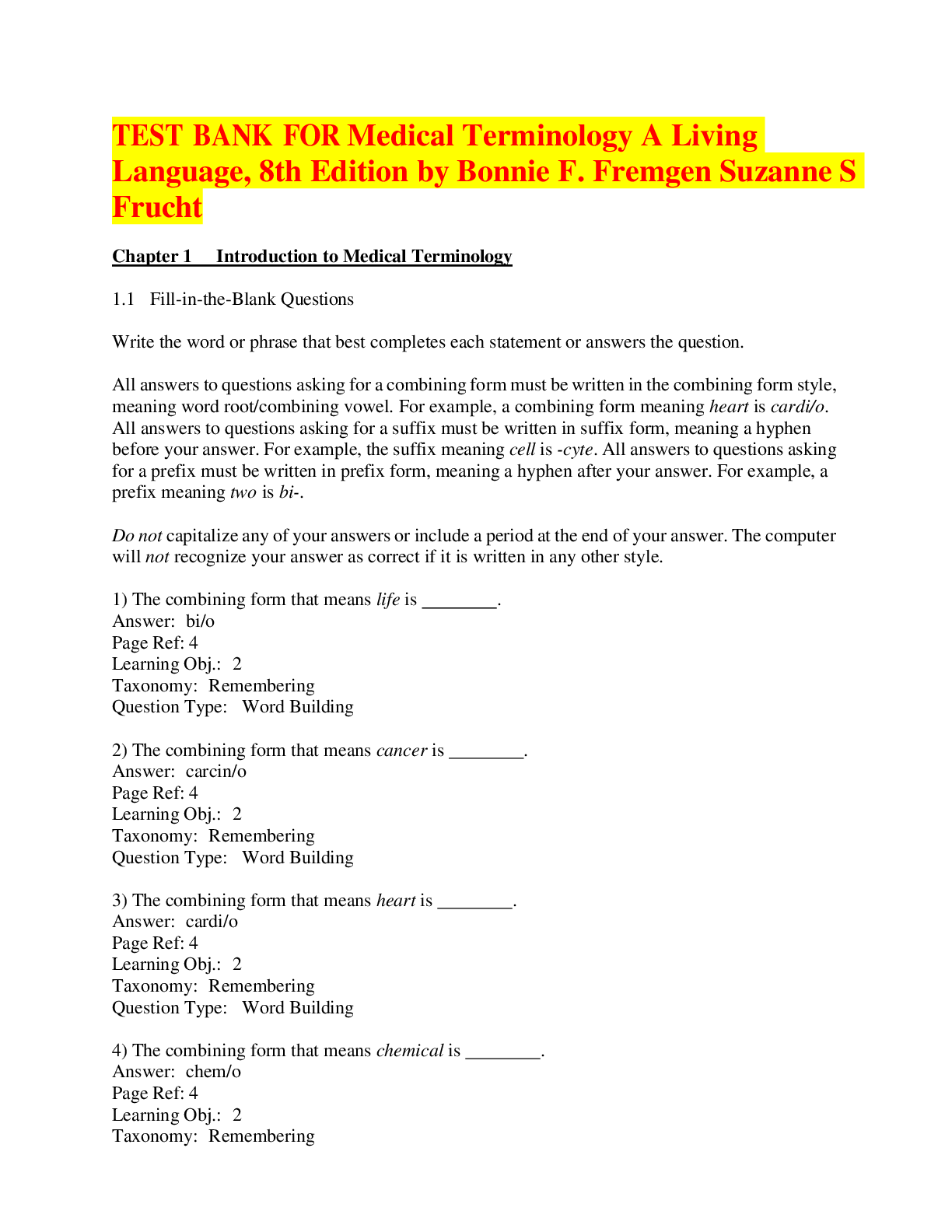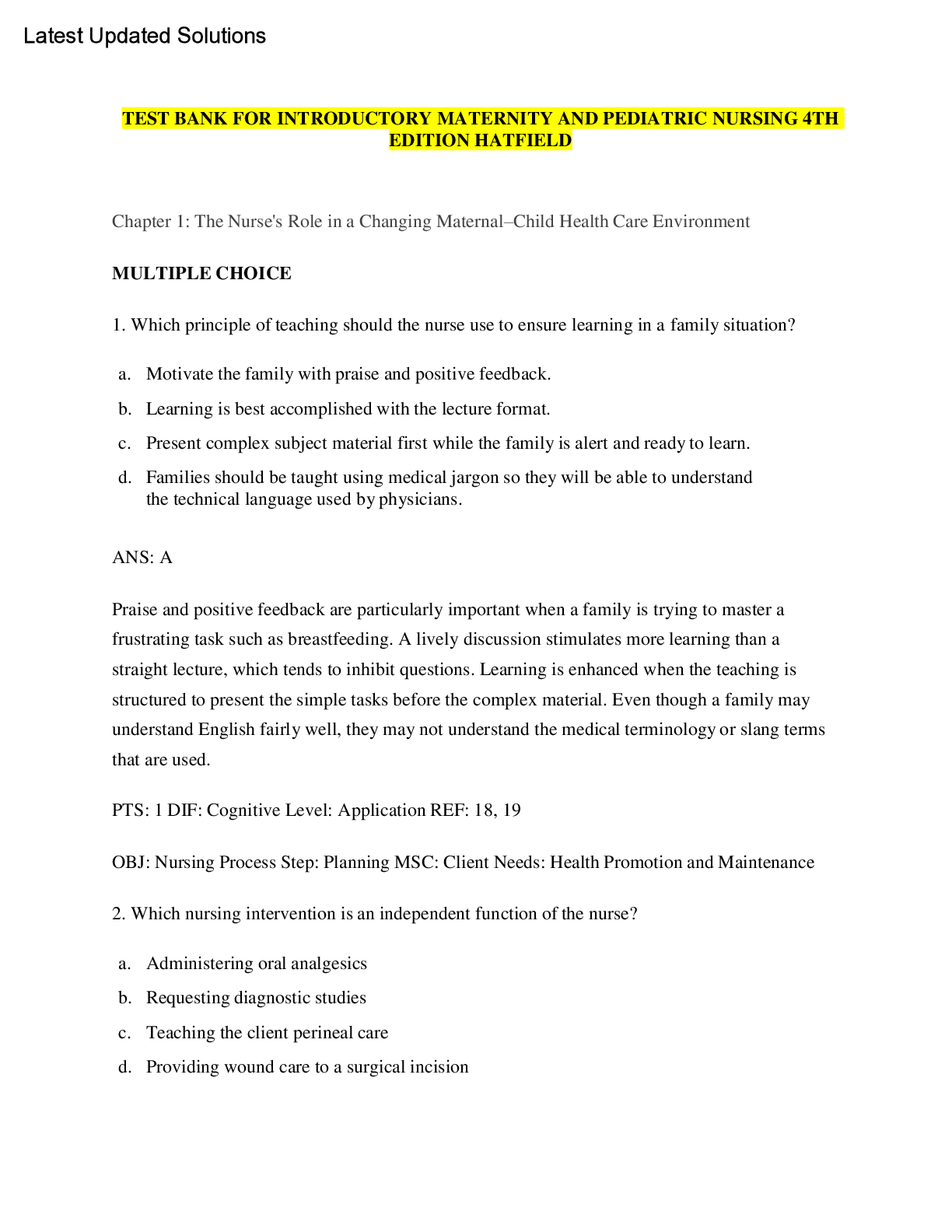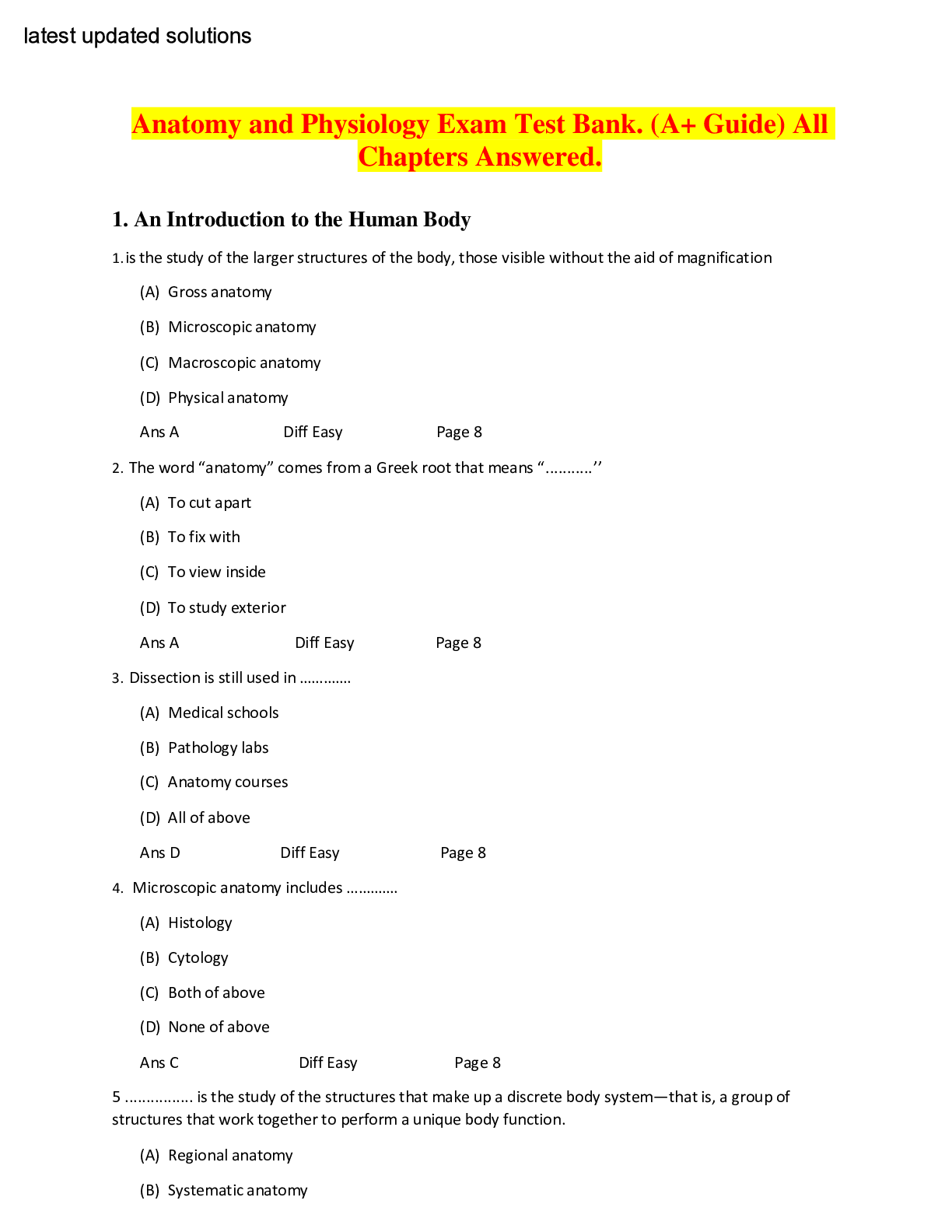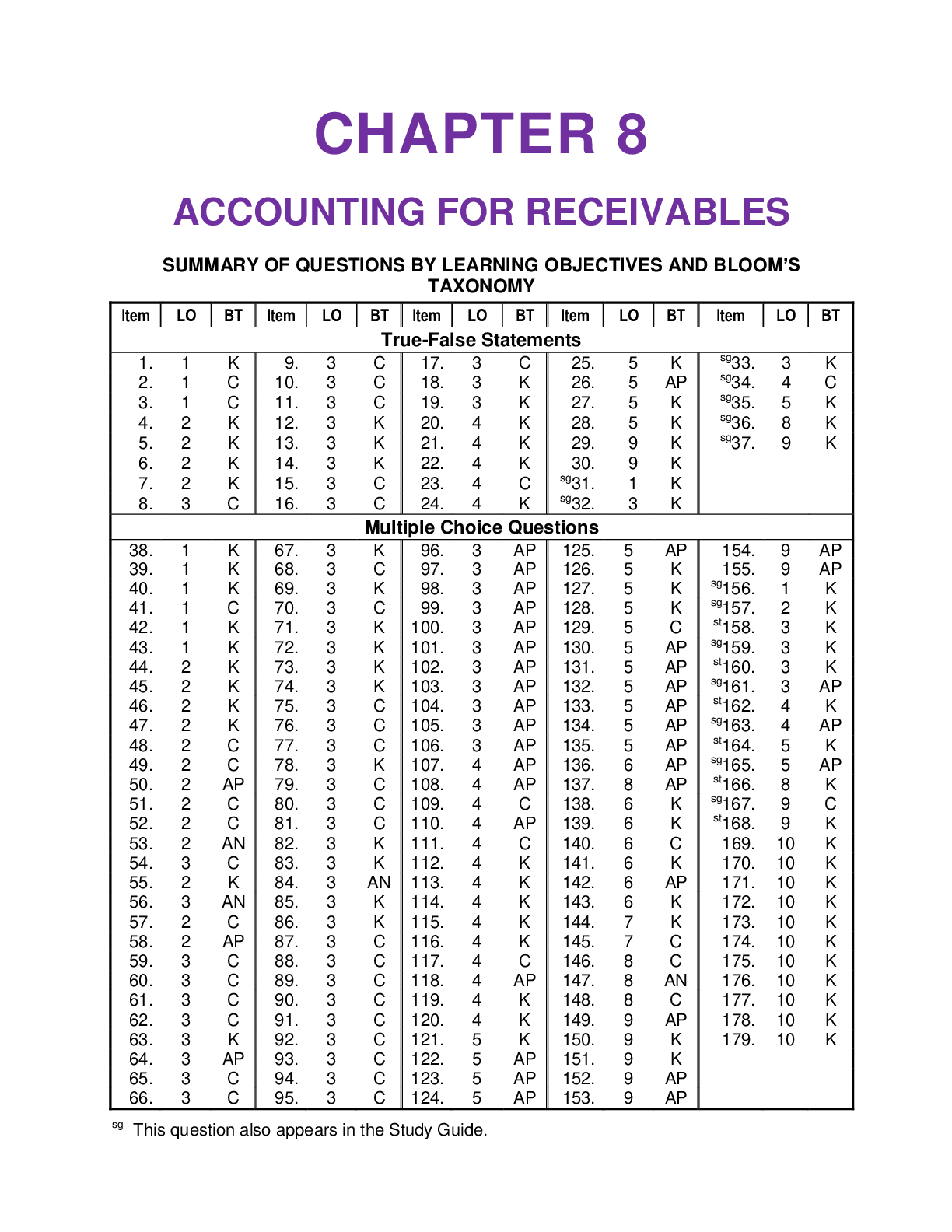Accounting > TEST BANKS > Test Bank for Accounting Principles 8th Canadian Edition (Volume 2) Jerry Weygandt, Donald Kieso, Pa (All)
Test Bank for Accounting Principles 8th Canadian Edition (Volume 2) Jerry Weygandt, Donald Kieso, Paul Kimmel, Barbara Trenholm, Valerie Warren, Lori Novak, Answers At The End Of Each Chapter
Document Content and Description Below
Test Bank for Accounting Principles 8th Canadian Edition (Volume 2) Jerry Weygandt, Donald Kieso, Paul Kimmel, Barbara Trenholm, Valerie Warren, Lori Novak, Answers At The End Of Each Chapter-1. Expla... in the importance of having a conceptual framework of accounting, and list the key components. The conceptual framework ensures that there is a consistent and coherent set of accounting standards. Key components of the conceptual framework are the: (1) objective of financial reporting; (2) elements of the financial statements; (3) qualitative characteristics; (4) recognition and measurement concepts; and (5) foundational concepts, assumptions, and constraints. 2. Explain the objective of financial reporting, and define the elements of the financial statements. The objective of financial reporting is to provide useful information for investors and creditors in making decisions in their capacity as capital providers. The elements are assets, liabilities, equity, revenue, and expense. Each element has a specific definition. The definitions provide important guidance on when an element should be recognized. 3. Apply the fundamental and enhancing qualitative characteristics of the conceptual framework to financial reporting situations. The fundamental qualitative characteristics are relevance and faithful representation. Financial information has relevance if it makes a difference in a decision. Materiality is an important component of relevance. An item is material when it is likely to influence the decision of a reasonably careful investor or creditor. Information is faithfully represented when it shows the economic reality and is complete, neutral, and free from material error. The enhancing qualitative characteristics are comparability, verifiability, timeliness, and understandability. Comparability enables users to identify the similarities and differences between companies. The consistent use of accounting policies from year to year is part of the comparability characteristic. Information is verifiable if two knowledgeable and independent people would generally agree that it faithfully represents the economic reality. Timeliness means that financial information is provided when it is still highly useful for decision-making. Understandability enables reasonably informed users to interpret and comprehend the meaning of the information provided in the financial statements. 4. Apply the recognition and measurement criteria of the conceptual framework to financial reporting situations. General recognition criteria require that elements be recognized in the financial statements when it is probable that any economic benefit associated with the item will flow to or from the business and the item has a cost or value that can be measured or estimated with a reasonable amount of reliability. There are two approaches to revenue recognition:(1) contract-based and (2) earnings. The contract-based approach requires that revenue be recognized when promised goods or services are transferred and the amount reflects the consideration the business expects to receive. The earnings approach requires that revenue be recognized when the earnings process is complete, Test Bank for Accounting Principles, Eighth Canadian Edition the risks and rewards of ownership have been transferred, and the amount can be reliably measured. Expenses are recognized when there is a decrease in an asset or increase in a liability, excluding transactions with owners, which result in a decrease in owners’ equity. Four measurements used in accounting are (1) historical cost,(2) current cost,(3)realizable value, and (4) present value.Incorrect application of the basic recognition and measurement concepts can lead to material misstatements in the financial statements. Incorrect application can be due to error or intentional misstatement. 5. Apply the foundational concepts, assumptions, and constraints of the conceptual framework to financial reporting situations. The foundational concepts, assumptions, and constraints form the bedrock of accounting and are used to achieve the objective of financial reporting. The reporting entity concept requires that accounting for a reporting entity’s activities be kept separate and distinct from the accounting for the activities of its owner and all other reporting entities. The going concern assumption assumes that the company will continue operating for the foreseeable future. The monetary unit concept means that money is the common denominator of economic activity. The periodicity concept guides businesses in dividing up their economic activities into distinct time periods. The cost constraint is a pervasive constraint that ensures the value of the information provided is greater than the cost of providing it. The full disclosure concept requires companies to fully disclose circumstances and events that make a difference to financial statement users. [Show More]
Last updated: 4 months ago
Preview 5 out of 826 pages

Loading document previews ...
Buy this document to get the full access instantly
Instant Download Access after purchase
Buy NowInstant download
We Accept:

Reviews( 0 )
$17.50
Can't find what you want? Try our AI powered Search
Document information
Connected school, study & course
About the document
Uploaded On
Mar 10, 2025
Number of pages
826
Written in
Additional information
This document has been written for:
Uploaded
Mar 10, 2025
Downloads
0
Views
17






_compressed.png)
.png)
.png)


.png)



.png)

.png)







